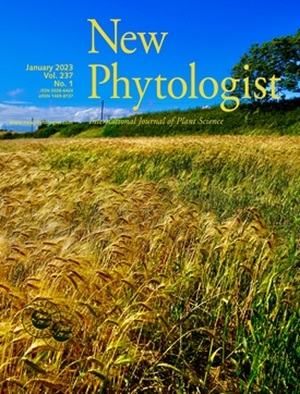Towards the control of biofilm formation in Anabaena (Nostoc) sp. PCC7120: novel insights into the genes involved and their regulation.
IF 8.3
1区 生物学
Q1 PLANT SCIENCES
引用次数: 0
Abstract
Cyanobacteria are major components of biofilms in light-exposed environments, contributing to nutrient cycling, nitrogen fixation and global biogeochemical processes. Although nitrogen-fixing cyanobacteria have been successfully used in biofertilization, the regulatory mechanisms underlying biofilm formation remain poorly understood. In this work, we have identified 183 novel genes in Anabaena sp. PCC7120 potentially associated with exopolysaccharide (EPS) biosynthesis and biofilm formation, unveiling conserved and novel regulatory connections shared with phylogenetically distant bacteria. Anabaena possesses homologues of two-component systems such as XssRS and ColRS from Xanthomonas spp., and AnCrpAB from Methylobacillus, suggesting that these homologues play essential or advantageous roles in biofilm formation across diverse bacterial lineages. Additionally, Anabaena features homologues of several proteins exhibiting the GG-secretion motif typical of small proteins required for biofilm formation in unicellular cyanobacteria. A wide array of biofilm-related genes in Anabaena, including major gene clusters participating in the synthesis and translocation of EPS and key regulatory proteins involved in the control of biofilms in other bacteria are modulated by ferric uptake regulator proteins. These findings link the control of biofilm formation in Anabaena to environmental cues such as metal availability, desiccation and nitrogen levels, providing new insights to improve the use of nitrogen-fixing cyanobacterial biofilms in sustainable agriculture and environmental management.对Anabaena (Nostoc) sp. PCC7120生物膜形成的控制:有关基因及其调控的新见解。
蓝藻是光暴露环境中生物膜的主要组成部分,参与养分循环、固氮和全球生物地球化学过程。虽然固氮蓝藻已经成功地应用于生物施肥,但生物膜形成的调控机制仍然知之甚少。在这项工作中,我们在Anabaena sp. PCC7120中鉴定了183个可能与胞外多糖(EPS)生物合成和生物膜形成相关的新基因,揭示了与系统发育上遥远的细菌共享的保守和新的调控联系。Anabaena具有双组分系统的同源物,如来自黄单胞菌的XssRS和ColRS,以及来自甲基芽孢杆菌的AnCrpAB,这表明这些同源物在不同细菌谱系的生物膜形成中起着重要或有利的作用。此外,Anabaena具有几种蛋白质的同源物,显示单细胞蓝藻生物膜形成所需的典型小蛋白质的gg分泌基元。在水藻中,大量的生物膜相关基因,包括参与EPS合成和易位的主要基因簇,以及参与其他细菌生物膜控制的关键调控蛋白,都受到铁摄取调节蛋白的调节。这些发现将Anabaena生物膜形成的控制与环境因素(如金属有效性、干燥性和氮水平)联系起来,为提高固氮蓝藻生物膜在可持续农业和环境管理中的应用提供了新的见解。
本文章由计算机程序翻译,如有差异,请以英文原文为准。
求助全文
约1分钟内获得全文
求助全文
来源期刊

New Phytologist
生物-植物科学
自引率
5.30%
发文量
728
期刊介绍:
New Phytologist is an international electronic journal published 24 times a year. It is owned by the New Phytologist Foundation, a non-profit-making charitable organization dedicated to promoting plant science. The journal publishes excellent, novel, rigorous, and timely research and scholarship in plant science and its applications. The articles cover topics in five sections: Physiology & Development, Environment, Interaction, Evolution, and Transformative Plant Biotechnology. These sections encompass intracellular processes, global environmental change, and encourage cross-disciplinary approaches. The journal recognizes the use of techniques from molecular and cell biology, functional genomics, modeling, and system-based approaches in plant science. Abstracting and Indexing Information for New Phytologist includes Academic Search, AgBiotech News & Information, Agroforestry Abstracts, Biochemistry & Biophysics Citation Index, Botanical Pesticides, CAB Abstracts®, Environment Index, Global Health, and Plant Breeding Abstracts, and others.
 求助内容:
求助内容: 应助结果提醒方式:
应助结果提醒方式:


